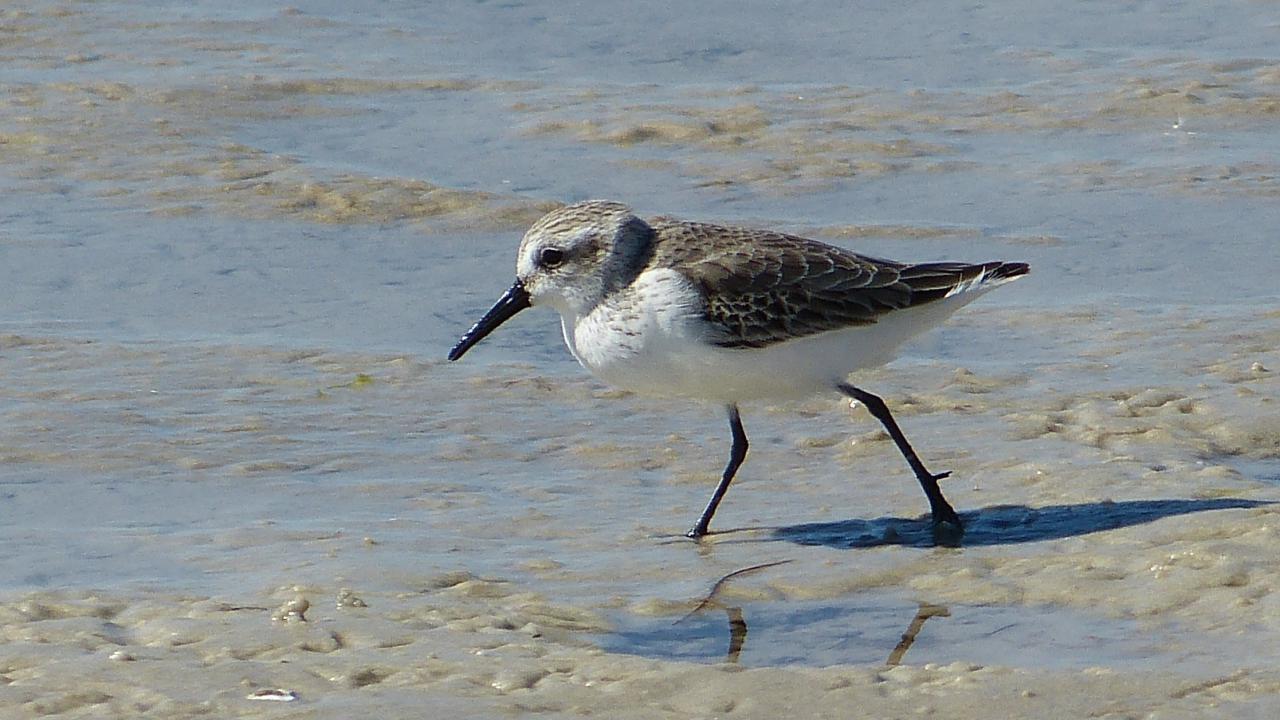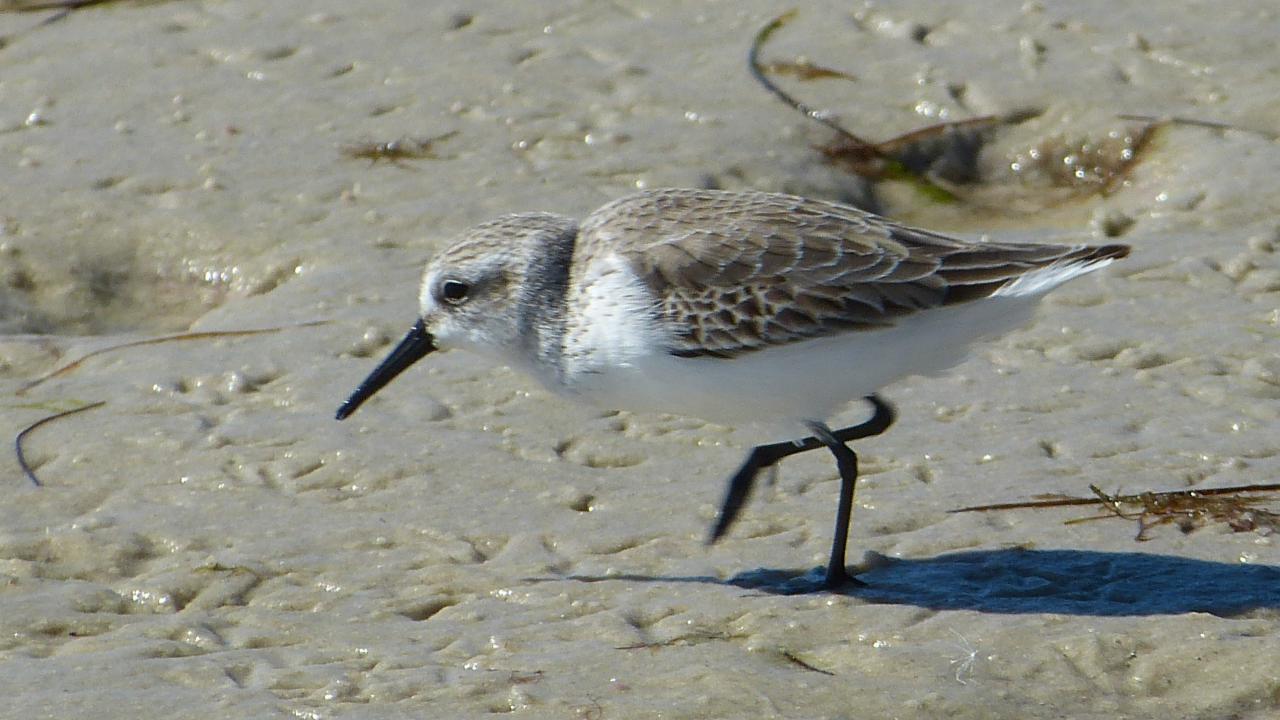Description:
In winter, the Western Sandpiper (Calidris mauri) can easily be confused with the Semipalmated Sandpiper and the Sanderling (Calidris alba).
It can distinguished from the Semipalmated Sandpiper by its relatively long sharp-pointed bill which is drooping slightly at the tip.
In winter, the Sanderling (usually) has a black patch in the shoulder which lacks with Western Sandpiper.
Sanderling (Calidris alba), Semipalmated Sandpipers (Calidris pusilla), Western Sandpipers (Calidris mauri) and Least Sandpipers (Calidris minutilla) all occur in the US and can easily be confused with each other, especially in winter.
Least Sandpiper, however, has greenish-yellow legs while the others have black legs.
A recently (2013) discovered reliable field mark is that Sanderling (and Least Sandpiper) has a distinguised gape notch ("hook" or "line" at the base of the bill), in all plumages.
Semipalmated (Calidris pusilla) and Western Sandpipers (Calidris mauri) don’t really show that gape notch.
Most field guides don't mention this feature.
On the first photo you can see a hindclaw (which seem a little high), which Sanderling doesn't have.
San Carlos Bay - Bunche Beach Preserve, Fort Myers, Florida, USA, 22 November 2012


